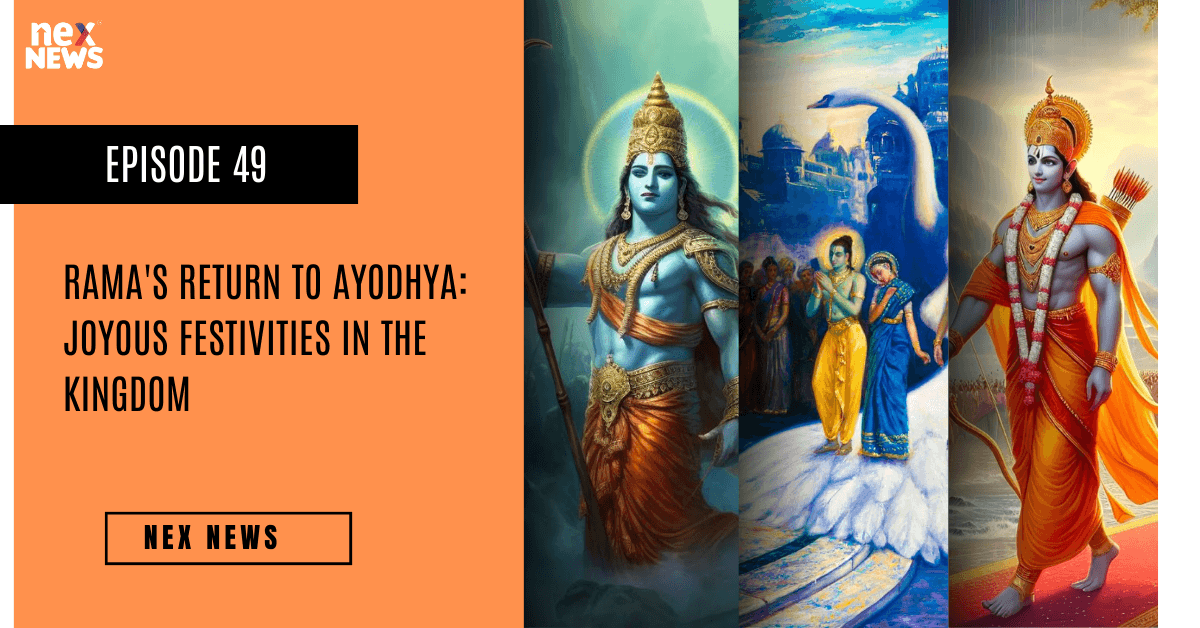The Ramayana, an ancient Indian epic, unfolds a tale of love, sacrifice, and duty. Among its many poignant moments, the return of Lord Rama to Ayodhya stands as an epitome of joyous festivities and profound significance. This pivotal event marks the culmination of a long and arduous journey, encapsulating the triumph of righteousness over evil. The streets of Ayodhya echoed with jubilation as the rightful heir returned to his kingdom, bringing an end to an era of exile and heralding a new beginning.
The Exile and Sita's Abduction:
The narrative leading up to Rama's return is fraught with challenges and trials. Rama, the prince of Ayodhya, along with his devoted wife Sita and loyal brother Lakshmana, faced a fourteen-year exile as a result of a political intrigue orchestrated by Queen Kaikeyi. The path of exile led them through the enchanting forests where they encountered sages, demons, and divine beings. The most significant turning point in their exile was the abduction of Sita by the demon king, Ravana, setting the stage for a cosmic battle between good and evil.
The Vanquishing of Ravana:
Rama's unwavering commitment to dharma (righteousness) and his relentless pursuit of virtue culminated in the vanquishing of Ravana and the rescue of Sita. The epic war, fought with valor and divine intervention, showcased the triumph of righteousness and the defeat of demonic forces. Rama's victory not only reinstated dharma but also paved the way for his return to Ayodhya.
Bharata's Regency:
During Rama's absence, Bharata, his loyal half-brother, ruled Ayodhya as a regent. Bharata, driven by unwavering devotion to Rama, refused to sit on the throne meant for the true heir and instead placed Rama's sandals on the throne as a symbolic gesture of his commitment to the rightful ruler. Bharata's rule was characterized by austerity and a deep yearning for Rama's return, exemplifying the virtues of loyalty and selflessness.
Hanuman's Role:
The return of Lord Rama was not solely the triumph of mortal heroes; it was also a celebration of the divine interventions that shaped the course of events. Hanuman, the devoted monkey god and ardent follower of Rama, played a pivotal role in the rescue of Sita and the eventual victory over Ravana. His unwavering devotion and selfless service became emblematic of the power of bhakti (devotion) in overcoming seemingly insurmountable obstacles.
The Golden Deer and Sita's Agni Pariksha:
The trials faced by Sita during her captivity in Lanka and her subsequent return to Ayodhya added layers of complexity to the narrative. The golden deer, a deceitful illusion created by Ravana, led to Sita's abduction, highlighting the consequences of succumbing to desires. Sita's Agni Pariksha (trial by fire), a symbolic purification ritual, became a test of her purity and fidelity, sparking debates about the expectations placed on women in ancient societies.
The Grand Return:
Rama's return to Ayodhya was not merely a homecoming; it was a restoration of dharma and a momentous occasion for the entire kingdom. As news of Rama's imminent return spread, the citizens of Ayodhya eagerly prepared for the grand event. The streets were adorned with flowers, and the air resonated with the sounds of joyous celebrations. The anticipation and excitement that filled the air were palpable as the people eagerly awaited the return of their beloved prince.
Joyous Festivities:
The return of Rama to Ayodhya was marked by extravagant celebrations that reverberated throughout the kingdom. The city was illuminated with countless lamps, symbolizing the dispelling of darkness and the triumph of light. The citizens, overjoyed at the return of their rightful king, lined the streets, showering flower petals as Rama, Sita, and Lakshmana made their way to the royal palace. The atmosphere was charged with a sense of unity, joy, and collective relief.
Coronation of Rama:
The crowning moment of the festivities was the coronation of Rama as the king of Ayodhya. The entire kingdom gathered to witness this historic event, where Rama, embodying the ideals of a righteous ruler, ascended the throne amid Vedic chants and sacred rituals. The coronation marked the end of a period of exile and uncertainty, ushering in an era of prosperity, justice, and righteous governance.
Lessons from Rama's Return:
Rama's return to Ayodhya is not just a mythological event but a timeless tale that imparts profound lessons. It emphasizes the importance of staying true to dharma even in the face of adversity, the power of unwavering devotion, and the eventual triumph of righteousness. The celebration in Ayodhya serves as a reminder that, despite the challenges and trials, goodness and virtue will always prevail.
Conclusion:
The return of Lord Rama to Ayodhya is a beacon of hope, a testament to the indomitable spirit of righteousness, and a celebration of the enduring values that guide humanity. The joyous festivities in Ayodhya, depicted in the Ramayana, echo through the ages as a reminder that, in the face of darkness, the light of dharma will always lead the way. Rama's return signifies not only the triumph of good over evil but also the resilience of the human spirit in the pursuit of truth, justice, and unwavering devotion.


POST A COMMENT (0)
All Comments (0)
Replies (0)